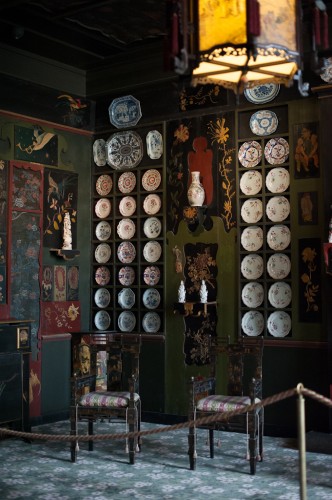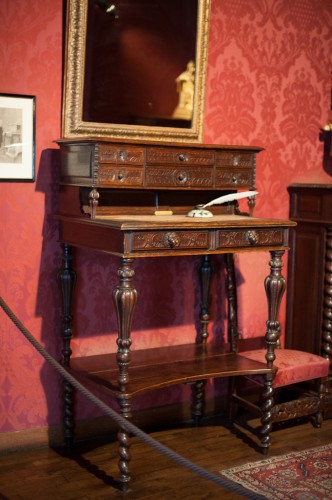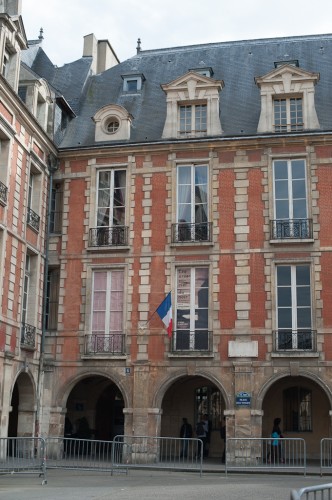If you’re in the Marais, head over to 6 Place des Vosges, where Victor Hugo lived with his wife and four children from 1832-1848 in the 16th century Hôtel de Rohan-Guéménée.
By the time he lived here, Hugo had already become a great success with his novel Notre-Dame de Paris and his play Harnani. Here, he wrote many of his major works including Marie Tudor, Ruy Blas and part of Les Misérables. During this period, he also became a member of the Académie Française (it took three tries) and Parliament.
The house is now a museum showcasing the author’s life. The requisite first editions and mementos are displayed, but the viewer is also treated to Hugo’s lesser-known works – drawings, photographs and furniture pieces – that he kept out of the public’s eye for fear it would overshadow his literary work. Also, there are many documents and correspondence from his artist friends including Dickens, Balzac and Liszt.
The museum is not a perfect likeness of Hugo’s home, as the layout changed over the years and much of his original furniture was auctioned off, but it bears a great resemblance. It’s easy to imagine Hugo hard at work at his desk or entertaining his many notable guests in the salon overlooking Place des Vosges.
The Place des Vosges is often called the most beautiful square in Paris. It is the oldest square in the city and is a good example of 16th century urban planning, with its symmetry and perimeter of red brick and white stone houses with vaulted arcades.
Place des Vosges stands on what was once the site of the Hôtel des Tournelles, a royal residence that was destroyed by order of Catherine de Medicis after her husband, King Henry II, died there in 1559. Originally named Place Royal, the square was given its present name in 1799 by Napoleon in honour of the first French region to pay the taxes to finance his military campaigns.
Victor Hugo, Place des Vosges, Marais, Paris, France



No comments yet.